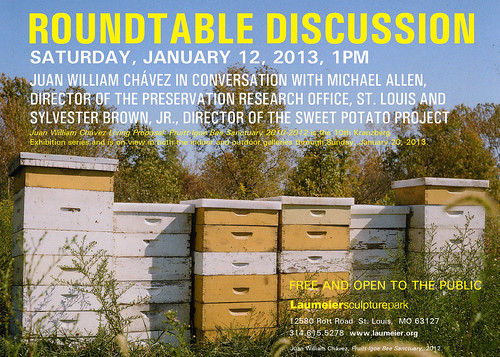More information can be found on the Laumeier Sculpture Park website.
Category: Events
Open House: Second Presbyterian Church
Sunday, November 18, 12:30 to 3 p.m.
4501 Westminster at Taylor
Second Presbyterian Church has recently renovated the sanctuary, originally dedicated in 1900, and invites the public to see this wonderfully restored space. The restoration project was coordinated by Powers-Bowersox, with advice from Gary Tetley. The building was designed by Theodore Link and is an outstanding example of the Romanesque Revival style defined by H. H. Richardson. The church’s beautiful collection of signed Tiffany windows is one of the treasures of St. Louis.
 Pruitt-Igoe: Why This, Why Here?
Pruitt-Igoe: Why This, Why Here?
Reception and Talk: Friday, November 16, 2012 — 5:00 p.m.
Show on view through November 23, 2012
Steinberg Hall Gallery, Washington University in St. Louis
Pruitt-Igoe: Why This, Why Here? highlights the continuous interest among communities, academic groups, and professional groups in the aftermath of the demolition of 33 high-rise Pruitt Home and Igoe Apartment buildings in St Louis between 1972 and 1977. The exhibition features finalists’ work from Pruitt Igoe Now, an ideas competition that gained momentum in spring 2012, garnering 346 responses that re-imagined the future of the 33-acre forested vacant Pruitt-Igoe site. Pruitt Igoe Now was launched by Michael Allen of St. Louis’ Preservation Research Office and Nora Wendl of Portland State University in July 2011; the jury included Bob Hansman, associate professor of architecture at Washington University. The open call for responses incited productive cross-disciplinary collaborations among the design and professional community worldwide.
The exhibition also foregrounds the collaboration of urban design and landscape architecture students in a design studio format at Washington University. Taught by assistant professors Patty Heyda and Natalie Yates, “Pruitt-Igoe Past-Futures” uncovered complexity and layered understanding of the call for response by examining the then, the now, and the future of the charged context.
In conjunction with the exhibition, Michael Allen will deliver the talk “The Promises of Pruitt-Igoe” at 5:00 p.m., November 16, followed by a reception.
The “Old Courthouse Players” will honor Veterans’ Day by presenting a radio-style play reading of My Dear Julia, the romance of Ulysses S. Grant and his beloved wife Julia, on Sunday, November 11, at 1:00 p.m. and again at 3:00 p.m. at the Old Courthouse in Downtown St. Louis.
Playwright and local historian NiNi Harris used memoirs and first hand accounts of the meeting, courtship and family life of Lieutenant General Ulysses S. and Julia Grant to tell the story of this famous romance. Ulysses and Julia met in St. Louis, were married in Downtown St. Louis, and returned to St. Louis throughout their lives. After Ulysses died of cancer, General William Tecumseh Sherman said to his widow Julia, “You were as true as the needle to the thread, in poverty as in wealth, in adversity as well as exaltation.”
The Players are a group of friends interested in local history and the preservation of local historic sites. They have presented play readings on the history of Prohibition in St. Louis, the Civil War in St. Louis, and the story of the St. Louis riverfront.
The play reading is approximately 40 minutes in length.
The plays are fashioned in the style of plays about events in St. Louis history that were presented on local stations during the early days of radio.
The play reading is free and open to the public.
The Belleville Historical Society will honor and celebrate the body of work created by architect Charles E. King in the Belleville area at a reception on Sunday afternoon, November 4th at 2:00 at the Alan J. Dixon Student Center on the campus of Lindenwood University (2600 W. Main Street). Artifacts from King’s period of work in Belleville and a photo display of his area designs will be a part of the reception.
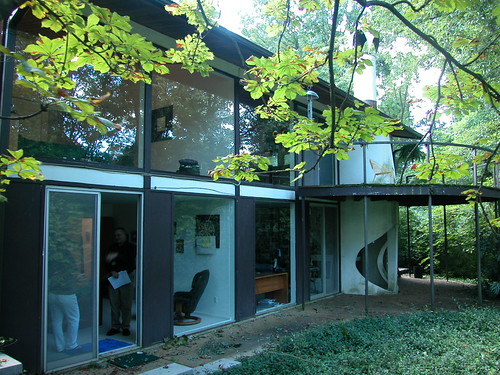
King, a 1947 graduate of the University of Illinois School of Architecture, practiced in Belleville from 1947 until 1961 when his firm was purchased by Hellmuth, Obata & Kassabaum in St. Louis. During his fourteen years in Belleville, at least 36 of his residential designs and 19 of his commercial designs were built. All but two still stand today. Probably the most notable of King’s works in Belleville is the City Hall designed in 1957 and dedicated in 1959. In 1957, he also designed five buildings on the campus of Belleville Township High School, one of which is the Fine Arts/Cafeteria Building in which the November 5th reception will be held.
King, who preferred to design in a Mid-Century Modern Style of architecture, went on to a very prolific career and in 1991 was named of one of Architectural Digest‘s “Top 100 Architects.” He was also the recipient of many other professional awards.
King, a native of Louisville, Kentucky, died on August 16, 1993 in St. Louis at the age of 73. This retrospective of King’s Belleville area designs is open to the public.
by Michael R. Allen
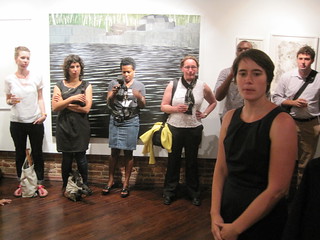
I am a Next American Vanguard alum, having been part of the 2010 “class” that met in that eastern outpost of solidly red brick neighborhoods, Philadelphia. In two days, we spent time taking in talks from the city’s experts in public policy, touring urban farms, abandoned waterfront sites and innovative small businesses, and learning about — and from — each other. Getting into conversations with peer practitioners from other disciplines and cities, I felt like my work in St. Louis was connected to a national movement to make our cities better. I also learned about my work — that it was something different to an education reform advocate from Los Angeles than to a City Councilman in Portland, Maine. Since 2010, the people I met at Next American Vanguard have shared ideas and articles, given me places to stay, connected me to colleagues in my field and provided advice.
While in St. Louis, Vanguard attendees will see what this city is doing right, and wrong. They will visit neighborhoods, the City Museum, the Regional Arts Commission and a downtown rooftop loft. They will hear from Mayor Francis Slay, from vanguard alums, Amos Harris, Richard Baron and Joe Edwards. Yet most of all they will find each other, peers who will invigorate their work with new perspectives. St. Louis is lucky to be the scene for the conversation at Next American Vanguard.
Who knows — maybe the city will shine brightly enough that a Vanguard or two will end up living here in the next few years. Maybe some people will leave us with a new idea or a potent, useful critique. At the very least, everyone will return to their cities knowing that St. Louis definitely is part of the national discussion on the future of American cities.
Open Streets comes to Southwest Garden this Saturday morning, and we are joining in with a tour:
Architectural Tour of Reber Place
Saturday, September 29 at 9:30 a.m.
Meet at west end of Reber Place at Hereford Avenue (both streets closed for Open Streets)
With its central median and large 19th century single dwellings, Reber Place might have passed for one of the city’s private streets. Yet historical development included the city’s largest clay sewer pipe works, a Roman Catholic parish complex, apartment buildings and bungalows. Today the one-block stretch of Reber Place west of Tower Grove Park contains a range of architectural styles and building types on a green, park-like street. Michael R. Allen will offer a short walk along Reber Place.
More information here.
Talk: “When Should Cities Go Away?”
City Seminar presents
“When Should Cities Go Away?”
Thursday, September 28 at 2:30 p.m.
Washington University in St. Louis, Danforth Campus, Busch Hall, Room 18
With guest speaker
Andrew Theising
Associate Professor, Department of Political Science
Director, Institute for Urban Research,
Southern Illinois University-Edwardsville
Light refreshments/ reception and discussion afterwards.
Generously sponsored by the American Culture Studies Program (AMCS) at Washington University.
City Seminar is a forum in which scholars across disciplines and from colleges and universities in the St. Louis area can share ideas, research methods, theories and topics on anything related to urban studies in the United States and abroad. At each meeting, a scholar presents some work in progress and then we have an informal discussion of the work, accompanied by drinks and snacks.
We hope this forum will help to build an intellectual community around urban scholarship and urban politics.
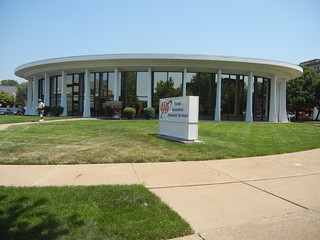 Preservation Research Office in partnership with Modern STL presents:
Preservation Research Office in partnership with Modern STL presents:
A Preservation Ellipsis: The AAA Building and Our Recent Architectural History
Saturday, September 29 at 1:00 p.m.
FORM Contemporary Design Show, 1521 Washington Avenue
Michael R. Allen will give a talk tracing the idea of preserving the AAA Building around to the fire that destroyed the AAA’s previous building on that site in 1975. Theme will run through various episodes in recent architectural history including preservation of the Old Courthouse and the riverfront clearance of the early 1940s, the demolition of Pruitt-Igoe in the 1970s and the relocation of the statue of Friedrich Schiller from St. Louis Place Park to across the street from Kiel Opera House in 1975. Weaving through the connections of several moments, the talk shows how we shape and reshape our sense of place through continual reinvention of the built environment.
 This talk is part of the FORM Contemporary Design Show, and annual exhibition of contemporary furniture, functional objects, architecture and design. FORM is a project of the Luminary Center for the Arts.
This talk is part of the FORM Contemporary Design Show, and annual exhibition of contemporary furniture, functional objects, architecture and design. FORM is a project of the Luminary Center for the Arts.
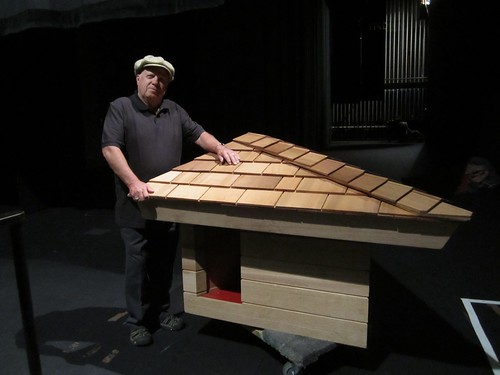
Date: Sunday, September 9, 2012 — 2:00 p.m.
Location: Missouri History Museum – Lee Auditorium
Tickets: $8 or $6 for members of The Missouri History Museum and/or The Frank Lloyd Wright House in Ebsworth Park.
Tickets now available by calling (314) 361-9017 or at the Missouri History Museum ticket desk.
ROMANZA: THE CALIFORNIA STRUCTURES DESIGNED BY FRANK LLOYD WRIGHT explores Frank Lloyd Wright’s 50-year relationship with the Golden State. Wright designed more than 80 projects for California and saw more than 25 built. The buildings were grand and modest, public and private, and came from each major era of Wright’s seven-decade career.
With unprecedented access to every California building designed by Wright, Romanza journeys all over the state, from the Los Angeles textile block houses, famous for appearances in dozens of Hollywood films, to Wright’s only San Francisco commission which he designed as a “glass of champagneâ€, from the cinder block homes of the San Joaquin valley, to the “Ship’s prow” home on the beach of Carmel bay, from Wright’s contentious relationship with oil heiress Aline Barnsdall, to perhaps the most charming of all Frank Lloyd Wright stories, the design for a doghouse in response to the letter of a 12-year-old boy.
Also included is substantial material on Wright’s unbuilt California work, some of the most fantastically imaginative structures he ever designed.
The documentary is filmmaker Michael Miner’s third about Wright’s architecture. 87 minutes. Q & A with the filmmaker will follow the screening.
A reconstruction of the doghouse will be on display.
Co-sponsored by The Frank Lloyd Wright House in Ebsworth Park
 and Missouri History Museum.

